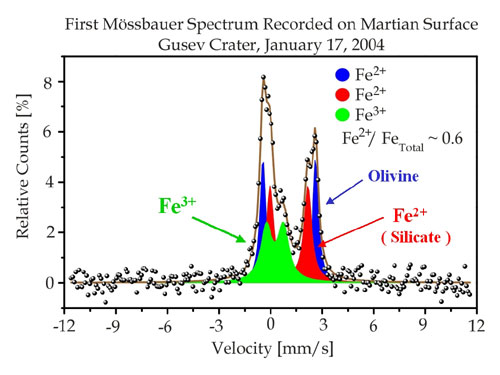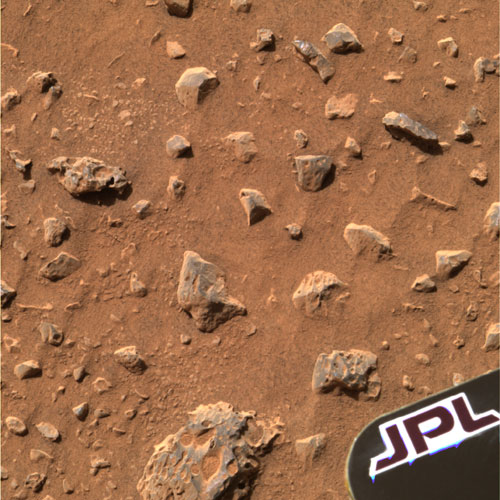|
The Enigmas on Mars 01 |
||
|
.
NASA Mars Rover’s First Soil Analysis Yields Surprises - January 20, 2004 Using nearly all the science instruments located on the rover's instrument deployment device or "arm," scientists yielded some puzzling results including the detection of a mineral called olivine and the appearance that the soil is stronger and more cohesive than they expected. Like detectives searching for clues, the science team will continue to peruse the landscape for explanations of their findings. Scientists initially thought that the soil was dust-like and therefore would collapse as the instrument pressed down on it with approximately 4 ounces (113 grams) of force. But they were surprised when, as the rotating frames show, the soil barely moved under the instrument's weight. Scientists are still determining why this happened. The above graph or spectrum captured by the Mössbauer spectrometer onboard the Mars Exploration Rover Spirit shows the presence of three different iron-bearing minerals in the soil at the rover's landing site. One of these minerals has been identified as olivine, a shiny green rock commonly found in lava on Earth. The other two have yet to be pinned down. Scientists were puzzled by the discovery of olivine because it implies the soil consists at least partially of ground up rocks that have not been weathered or chemically altered. The black line in this graph represents the original data; the three colored regions denote individual minerals and add up to equal the black line. The Mössbauer spectrometer uses two
pieces of
radioactive cobalt-57, each about the size of pencil
erasers, to determine
with a high degree of accuracy the composition and
abundance of iron-bearing
minerals in martian rocks and soil. It is located on
the rover's instrument
deployment device, or "arm."
|
||
| FAIR USE NOTICE: This page contains copyrighted material the use of which has not been specifically authorized by the copyright owner. Pegasus Research Consortium distributes this material without profit to those who have expressed a prior interest in receiving the included information for research and educational purposes. We believe this constitutes a fair use of any such copyrighted material as provided for in 17 U.S.C § 107. If you wish to use copyrighted material from this site for purposes of your own that go beyond fair use, you must obtain permission from the copyright owner. | ||
|
|


